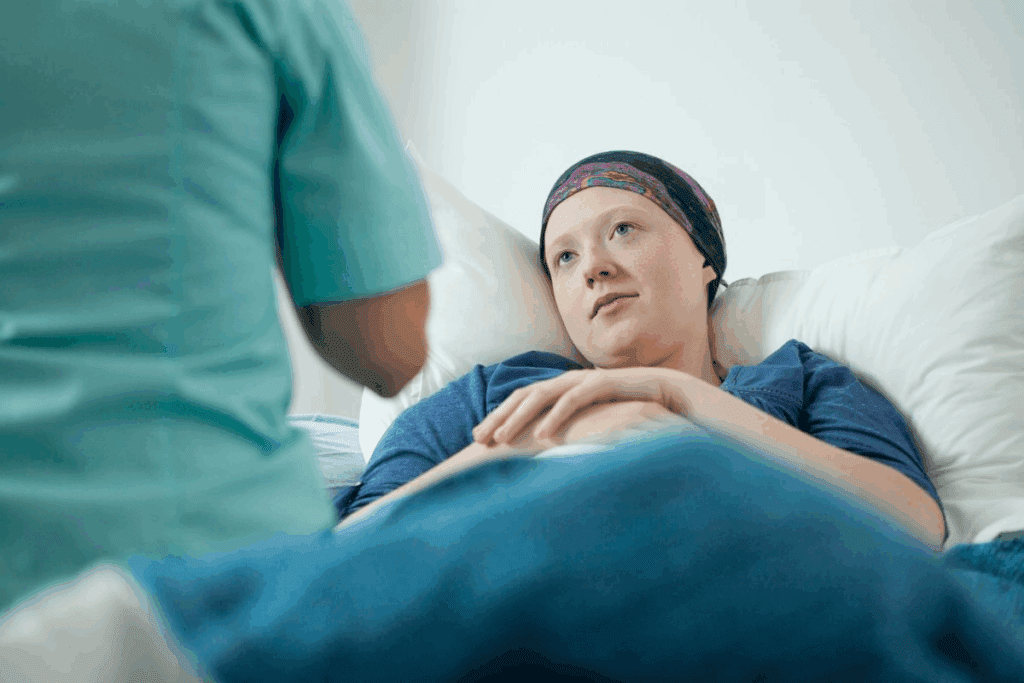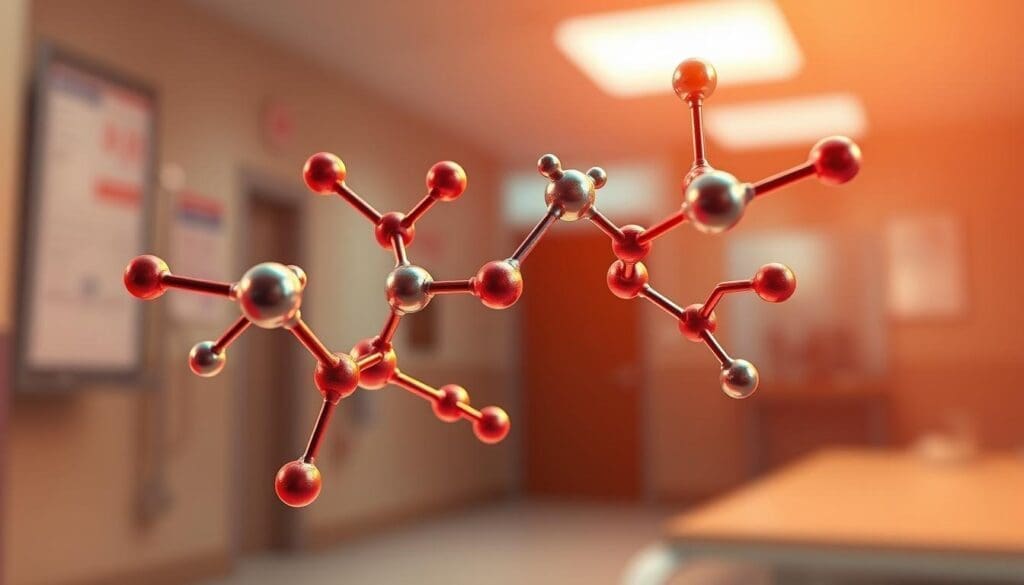Last Updated on November 25, 2025 by Ugurkan Demir

Treating bladder cancer needs a detailed plan. It must use the newest medical techniques and focus on the patient. Our team works hard to give top-notch care that meets each patient’s specific needs.
Learn about 7 key bladder cancer chemotherapy drugs. Find out the effective options used in treating different stages of bladder cancer.

Bladder cancer is a complex disease that needs a detailed treatment plan. This plan includes chemotherapy. It’s important to know the basics of bladder cancer and how chemotherapy fits into the treatment.
Bladder cancer starts in the bladder’s lining and can grow deeper or spread. The type and stage of the cancer help decide the best treatment.
There are two main types of bladder cancer: non-muscle-invasive (NMIBC) and muscle-invasive (MIBC). NMIBC stays in the lining, while MIBC goes deeper into the bladder wall.
The stage of bladder cancer shows how deep the cancer has grown. Doctors use the TNM system to stage it. This system looks at the tumor size, nearby lymph nodes, and if the cancer has spread.
| Stage | Description | Treatment Approach |
| Stage 0 | Cancer is confined to the bladder lining | Intravesical chemotherapy or BCG immunotherapy |
| Stage I | Cancer has grown into the lamina propria | Intravesical chemotherapy or BCG immunotherapy |
| Stage II | Cancer has invaded the muscle layer | Radical cystectomy or systemic chemotherapy |
| Stage III | Cancer has spread to nearby tissues or lymph nodes | Systemic chemotherapy and possibly surgery |
| Stage IV | Cancer has metastasized to distant sites | Systemic chemotherapy and palliative care |
Chemotherapy kills cancer cells. For bladder cancer, it can be given directly into the bladder or through the veins. This helps treat non-muscle-invasive and muscle-invasive cancers.
Drugs like gemcitabine, cisplatin, docetaxel, and mitomycin C are used. They target fast-growing cancer cells, slowing down tumor growth.
Understanding bladder cancer and chemotherapy helps us see their importance. Chemotherapy is a key part of treating bladder cancer, giving patients hope and better outcomes.

Bladder cancer treatment comes in different forms, like intravesical and systemic chemotherapy. Knowing the differences is key to finding the best treatment.
Intravesical chemotherapy puts drugs directly into the bladder. It’s mainly used for non-muscle-invasive bladder cancer (NMIBC).
Systemic chemotherapy, by contrast, is taken orally or through an IV. It’s often used for more serious bladder cancer cases.
Choosing between intravesical and systemic chemotherapy depends on the cancer’s stage and the patient’s health.

Gemcitabine is a key drug in treating bladder cancer. It’s a nucleoside analog that helps fight cancer. It’s used in many cancer treatments, including bladder cancer.
Gemcitabine stops cancer cells from copying themselves by blocking DNA synthesis. It’s very effective in treating bladder cancer, even more so when combined with other drugs.
A study in the Journal of Clinical Oncology found that gemcitabine and cisplatin work well together. This combo improves survival rates and reduces side effects compared to other treatments.
“The combination of gemcitabine and cisplatin has become a standard of care for patients with advanced bladder cancer, balancing efficacy and tolerability.”
Natalie M. Gallo, MD, Urologic Oncologist
Gemcitabine is given through an IV, on days 1 and 8 of a 21-day cycle. The exact dose and schedule depend on the patient’s health and cancer stage.
| Day | Gemcitabine Dose | Cisplatin Dose |
| 1 | 1000 mg/m² | 70 mg/m² |
| 8 | 1000 mg/m² | – |
Gemcitabine is usually safe but can cause side effects like fatigue, nausea, and low blood counts. It’s important to manage these to keep patients comfortable during treatment.
Understanding how gemcitabine works, how it’s given, and its side effects helps doctors use it better. This improves treatment outcomes and quality of life for patients.
Cisplatin is a key chemotherapy drug for many cancers, including bladder cancer. It damages cancer cells’ DNA, stopping them from making copies.
Cisplatin forms platinum-DNA adducts. These interfere with DNA repair, causing cell death. This makes it a strong treatment for bladder cancer.
Cisplatin is given through an IV. The dose depends on the patient’s health and condition.
Side effects include nausea, vomiting, tiredness, and kidney damage. It’s important to manage these to keep the patient’s quality of life good.

Docetaxel is becoming a key treatment for BCG-resistant bladder cancer. It’s a taxane-based drug that stops cancer cells from dividing. This makes it great for fighting fast-growing cancer cells.
Docetaxel works by stopping cell division. It does this by binding to microtubules and preventing them from breaking down. This leads to cancer cells dying off.
In bladder cancer, docetaxel is a promising option, even for those who didn’t respond to BCG therapy. It can be used alone or with other drugs. Recent studies show it’s effective against BCG-resistant non-muscle-invasive bladder cancer.
The mix of gemcitabine and docetaxel is a big win for treating BCG-resistant bladder cancer. Gemcitabine stops DNA from being copied, while docetaxel messes with microtubules. Together, they work better than alone.
Docetaxel is usually safe but can cause side effects like neutropenia, fatigue, and hair loss. It’s important to watch for and manage these side effects to keep patients safe and comfortable.
Don’t use docetaxel if you’re allergic to it or have severe liver problems. Careful patient selection and adjusting doses based on each patient’s needs are key.
Mitomycin C is a key part in treating bladder cancer. It provides a targeted and effective way to manage the disease. Healthcare providers use it to make informed decisions for patient care.
MVAC is a key treatment for bladder cancer. It combines methotrexate, vinblastine, doxorubicin, and cisplatin. This mix helps fight the disease well.
Methotrexate is a key part of MVAC. It stops cancer cells from making DNA. This makes the treatment more effective.
Vinblastine stops cancer cells from dividing. It works with other drugs in MVAC to target bladder cancer.
Doxorubicin stops cancer cells from growing. It works well with other MVAC drugs to treat bladder cancer.
MVAC and gemcitabine-cisplatin are both good treatments for bladder cancer. MVAC has been used for a long time. But, gemcitabine-cisplatin might have fewer side effects.
| Therapy | Components | Effectiveness | Common Side Effects |
| MVAC | Methotrexate, Vinblastine, Doxorubicin, Cisplatin | High response rate in advanced bladder cancer | Myelosuppression, mucositis, alopecia |
| Gemcitabine-Cisplatin | Gemcitabine, Cisplatin | Comparable to MVAC with potentially fewer side effects | Myelosuppression, nausea, fatigue |
In conclusion, MVAC is a major treatment for bladder cancer. Knowing about its parts and comparing it to gemcitabine-cisplatin helps in choosing the right treatment.
Neoadjuvant and adjuvant chemotherapy are key methods used with surgery to fight bladder cancer. They aim to target cancer cells at various stages of the disease. This helps improve treatment results.
Neoadjuvant chemotherapy is given before surgery. It aims to shrink the tumor, making it simpler to remove. This method offers several advantages, including:
Research shows that neoadjuvant chemotherapy can boost survival rates and lower cancer return risks.
Adjuvant chemotherapy is given after surgery. It targets any cancer cells left behind. The main aims are to:
Adjuvant chemotherapy is often suggested for those with high-risk features. This includes muscle-invasive disease or cancer in lymph nodes.
Understanding neoadjuvant and adjuvant chemotherapy helps us see their role in treating bladder cancer. They are key parts of a complete treatment plan, leading to better patient results.
Chemotherapy has changed how we treat bladder cancer, giving hope to patients everywhere. New chemotherapy methods have made treatments more effective.
Using a mix of chemotherapy drugs, like gemcitabine and cisplatin, is showing great results. This approach targets bladder cancer cells well. Researchers are always looking for new ways to help patients, giving them more options.
As we learn more about cancer, we’ll see even better treatments for bladder cancer. This will lead to better lives for those affected by this disease.
Chemotherapy kills cancer cells or slows their growth. It’s used before or after surgery to lower the chance of cancer coming back.
Drugs like gemcitabine, cisplatin, and MVAC (methotrexate, vinblastine, doxorubicin, and cisplatin) are used to treat bladder cancer.
Intravesical chemotherapy delivers drugs directly into the bladder. This method ensures high drug levels on the bladder lining, targeting cancer cells effectively.
Neoadjuvant chemotherapy is given before surgery to shrink tumors. Adjuvant chemotherapy is given after surgery to kill any remaining cancer cells.
Chemotherapy can cause nausea, vomiting, fatigue, hair loss, and a higher risk of infections. Side effects vary based on the drug and dose.
Chemotherapy can be effective, often used with other treatments. Its success depends on the cancer’s stage, type, and the patient’s health.
In some cases, chemotherapy can cure bladder cancer, mainly at early stages. Success depends on several factors, including cancer stage and patient health.
MVAC chemotherapy, with methotrexate, vinblastine, doxorubicin, and cisplatin, is effective against advanced bladder cancer. It can reduce tumors and improve survival chances.
Mitomycin C is a chemotherapy drug for bladder cancer. It’s given directly into the bladder through a catheter.
Gemcitabine is a chemotherapy drug for bladder cancer. It interferes with cancer cell growth and is often used with other treatments.
National Center for Biotechnology Information. (2025). 7 Key Chemotherapy Drugs for Bladder Cancer Treatment. Retrieved from https://pmc.ncbi.nlm.nih.gov/articles/PMC9263750/
Subscribe to our e-newsletter to stay informed about the latest innovations in the world of health and exclusive offers!